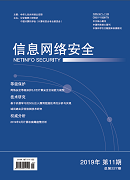With the increasing openness of industrial control system, a large number of industrial control protocol vulnerabilities are exposed on the Internet, causing a sharp rise in industrial control system security risks. In this paper, a network security analysis method of industrial control system based on time automata is proposed based on the Modbus protocol, which is the most commonly used Modbus protocol in industrial control system. Firstly, the network structure, safety attributes and security threats of the control system are summarized according to the filling production process. Then, the state, behavior, security policy and attack behavior of the control system are modeled by time automata, and the models are connected into a network by clock synchronization. Finally, the UPPAAL tool is used to write the security attribute formula, and the security attribute is verified in two cases with or without attack. The comparison of experimental results shows that the man-in-the-middle attack against Modbus protocol successfully destroys the integrity and availability of the control system.

